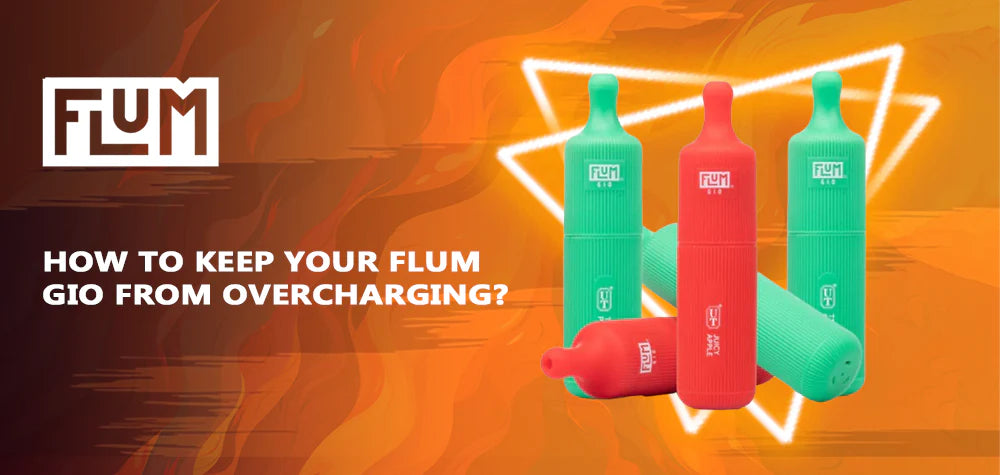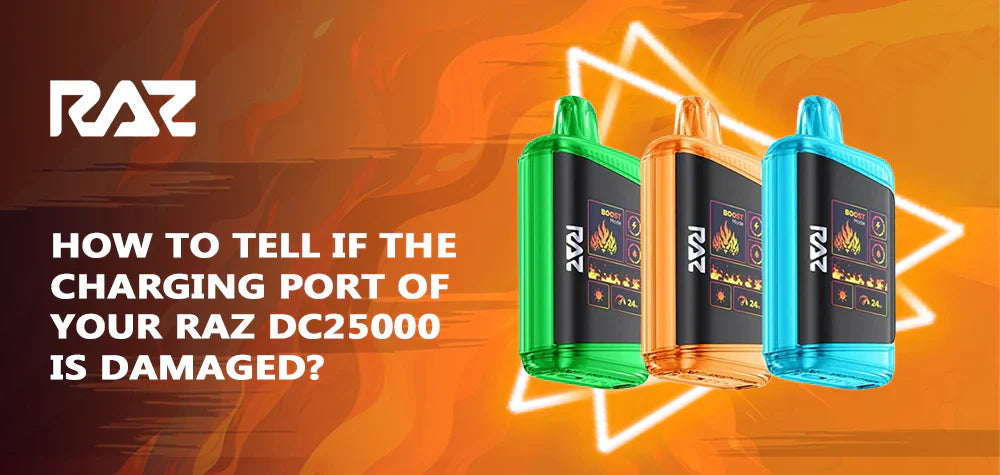
How To Tell That The Charging Port Of Your Flum Gio Is Damaged?
The charging port is a critical component that facilitates the transfer of electrical power from the charger to the internal battery of your Flum Gio. Typically designed as a USB-C port, it must maintain a secure and stable connection with the charging cable to ensure efficient power delivery. Any damage or obstruction in this port can disrupt the charging process, leading to poor battery performance or device malfunction.
Understanding the charging port's function helps you better recognize when something is wrong. A properly functioning port should allow the charger to fit snugly without wobbling, provide consistent charging without interruption, and not generate excessive heat during use.
Common Causes of Charging Port Damage
Several factors can contribute to damage to the charging port of your Flum Gio. Frequent plugging and unplugging over time can cause wear and loosen the internal connectors, leading to a poor fit with the charging cable. Physical impacts such as dropping the device or rough handling can also cause cracks, bent pins, or misalignment within the port.
Exposure to moisture or accumulation of dust and lint can corrode or obstruct the port, preventing proper electrical contact. Using incompatible or low-quality chargers may also stress the port's circuitry, increasing the risk of damage and affecting the device's ability to keep it from overcharging effectively.
Signs That Indicate a Damaged Charging Port
One of the most apparent signs of a damaged charging port is looseness. If the charging cable does not fit securely or easily falls out, this may indicate that the internal connectors are compromised. A loose connection often results in intermittent charging, where the device only charges at certain angles or stops charging altogether.
Inconsistent charging is another key indicator. If your Flum Gio starts and stops charging unpredictably or fails to charge entirely when plugged in, this could be due to port damage. Pay attention to any unusual sensations such as resistance or grinding noises when inserting or removing the charger, as these may suggest bent pins or internal misalignment.
Visual inspection can also reveal damage. Look closely for cracks around the port, corrosion, bent or missing pins, or foreign objects lodged inside. Dust and debris accumulation can obstruct the port, so regular cleaning is important to maintain connectivity.
Additionally, overheating during charging is a warning sign. If the area around the charging port becomes excessively warm or hot, it could indicate a malfunctioning or damaged port that is causing electrical resistance or short circuits.
Troubleshooting and Diagnosing Charging Port Problems
If you suspect your Flum Gio's charging port is damaged, start by inspecting the port for visible debris or dust. Using gentle cleaning methods can often resolve minor issues. Employ tools such as a soft brush, compressed air, or a cotton swab to carefully remove obstructions without damaging internal components.
Next, test your device with a different compatible charger and USB cable to rule out accessory-related problems. Using the original charger or one recommended by the manufacturer is crucial for proper charging.
Check the fit of the charger in the port; it should be snug without wobbling. If the cable fits loosely or disconnects easily, internal damage is likely. If cleaning and changing chargers do not resolve the problem, the charging port may require professional repair or replacement.
Preventive Measures and Maintenance Tips
To minimize the risk of charging port damage, handle your Flum Gio with care. Avoid excessive force when plugging or unplugging the charger, and never use incompatible or high-wattage chargers that can stress the port's circuitry.
Regularly inspect and clean the charging port using appropriate tools needed to clean the charging port, such as compressed air and soft brushes, to prevent dust and lint buildup. Keeping the port clean ensures a stable connection, which helps the device's internal system accurately detect battery status and keep it from overcharging.
Avoid exposing your device to moisture or extreme environmental conditions, as these can accelerate corrosion and damage.
When to Seek Professional Help
If you have tried cleaning the port, tested different chargers, and still experience charging issues such as failure to charge, intermittent charging, or overheating, it is advisable to contact customer support or visit an authorized service center. Attempting to repair the charging port yourself can risk further damage.
Professional technicians can diagnose internal damage and perform repairs or replacements safely. In some cases, if the damage is extensive, replacing the device might be the most practical solution.
Conclusion
Recognizing the signs of a damaged charging port on your Flum Gio is vital for maintaining device functionality and battery health. Loose connections, inconsistent charging, failure to charge, slow charging, and overheating are all red flags that warrant inspection and action.
By regularly inspecting and cleaning the charging port, using compatible chargers, and handling your device carefully, you can prevent damage and ensure efficient charging. These practices help keep your Flum Gio operating safely and effectively, preserving battery life and performance over time. Should damage occur, prompt troubleshooting and professional assistance will safeguard your device and vaping experience.


